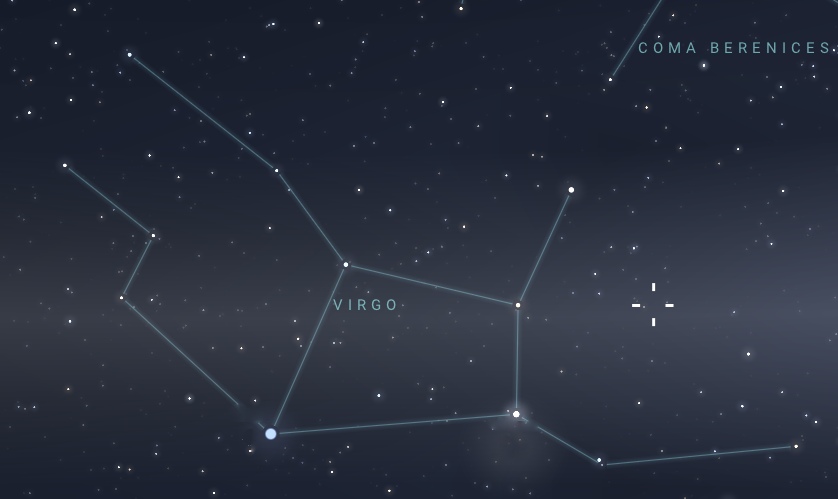M49, also known as NGC 4472, is a giant elliptical galaxy located in the constellation Virgo. It is one of the most massive and luminous galaxies in the Virgo Cluster.
The galaxy was discovered by Charles Messier on February 19, 1771 and included in the Messier Catalogue. Here are some key details about M49:
Features and Structure
M49 lies approximately 53.6 million light-years from earth and has a diameter of roughly 157,000 light-years. It is one of the brightest galaxies in the Virgo Cluster, with a luminosity about 10 times that of the Milky Way.
The galaxy contains a rich system of globular clusters, approximately 6,000, compared to the Milky Way’s 150-200, and its mass is estimated to be around 200 billion solar masses. It is predominantly composed of older, metal-rich stars. At its nucleus is a supermassive black hole, with an estimated mass of about 500 million solar masses.
M49 is also a strong source of X-rays, indicative of hot gas in the galaxy’s halo, possibly from the accretion of intergalactic matter.
Surrounding Environment
M49 is a member of the Virgo Cluster, a massive cluster of galaxies that serves as the core of the Virgo Supercluster. Several dwarf galaxies are associated with M49, such as UGC 7636 and UGC 7637.
As one of the largest and most luminous elliptical galaxies in the nearby universe, M49 provides insights into the formation and evolution of elliptical galaxies. The high number of globular clusters around M49 allows astronomers to study the formation and evolution of these star systems in greater detail.

Observation
M49 is best viewed during the spring months, particularly from March to May, when Virgo is high in the evening sky. It can also be seen from the Southern Hemisphere, but it will appear lower in the northern part of the sky. Observers in the Southern Hemisphere should look for it during the autumn months, around the same period (March to May), when Virgo is visible.
The galaxy is best viewed from mid-latitude locations in both hemispheres. In the Northern Hemisphere, locations between 30° and 50° latitude north provide an excellent vantage point.
In small telescopes, M49 appears as a diffuse, elliptical glow. Through binoculars, it will appear as a faint, diffuse patch of light. It won’t show much detail, but its elliptical shape might be discernible under dark skies. It is recommended to use binoculars with at least 50mm objective lenses (e.g., 10×50 or 15×70 binoculars). Larger binoculars will provide better views.
To find M49, locate the brighter stars of Virgo and use a star map or an astronomy app to pinpoint its position. It lies about 4.5 degrees west-southwest of the star Epsilon Virginis (Vindemiatrix).



